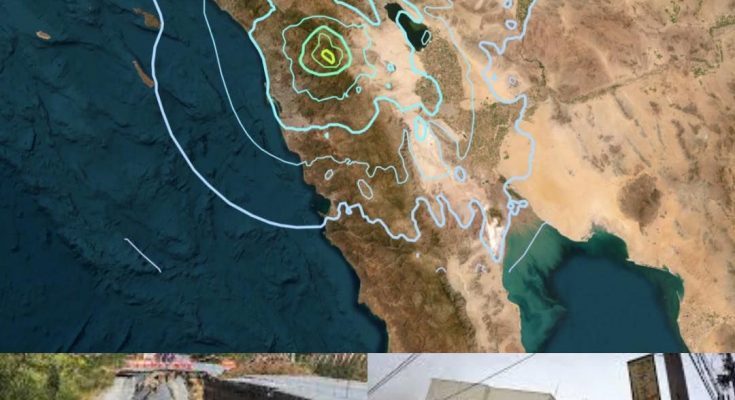Researchers believe that a significant earthquake in Southern California this week may have an unforeseen origin, yet it has revived concerns regarding the potential for the ‘Big One’. The Elsinore fault, a lesser-known branch of the infamous San Andreas fault, spans over 100 miles across Southern California, extending from the US-Mexico border through San Diego and Riverside Counties, and up towards Los Angeles. Located just 15 miles from San Diego County, the Elsinore fault is recognized as one of the largest fault zones in the region, according to the California Institute of Technology. Seismologist Lucy Jones warned that while the Elsinore fault has been relatively inactive in recorded history, it remains capable of generating an earthquake with a magnitude of up to 7.8. Data from the Southern California Earthquake Center and the US Geological Survey (USGS) indicate that significant earthquakes exceeding a magnitude of 6.0 have occurred on the Elsinore fault every 100 to 200 years, with the most recent event taking place in 1910. ‘The Elsinore fault represents one of the major hazards in Southern California,’ Jones remarked following the 5.2 magnitude quake in San Diego on Monday. ‘In recent years, we have experienced a higher frequency of felt earthquakes than we have seen in several decades,’ she continued. The USGS has formulated its own projections regarding the potential impact of a catastrophic earthquake if the ‘Big One’ were to affect the Elsinore fault instead of the San Andreas, as seismic activity seems to be on the rise. The destruction from such a monumental event would likely reach from San Diego to Los Angeles and possibly beyond. Although it is a separate fault line, the Elsinore fault is part of the larger San Andreas fault system, a network of faults that work together to accommodate tectonic plate movements in California. In Southern California, the Elsinore fault runs parallel to and east of the San Andreas, measuring approximately 110 to 150 miles in length and traversing through San Diego County from the US-Mexico border. Dr. Jones confirmed that the seismic activity along the Elsinore fault line is associated with recent events.Although earthquakes along the Elsinore fault are infrequent, the seismologist warned that when they do occur, they can cause significant destruction in Los Angeles, which has a population of approximately four million residents. In 2017, the USGS conducted a simulation of a 7.8 magnitude earthquake along the Elsinore fault, which extends northwest towards the Whittier fault line near Los Angeles. This hypothetical ‘Big One’ would result in intense shaking and considerable structural damage to buildings and their foundations in Los Angeles. USGS researchers estimated that the Modified Mercalli Intensity (MMI) in Los Angeles could reach between 7.5 and 9.0, nearing the upper limits of the seismic activity scale, based on their mapping of potential devastation. Only MMI levels 10 to 12 indicate more severe conditions, which would lead to ‘total destruction’ from such an earthquake. In contrast, a simulated earthquake in San Diego would yield an MMI of 4.0 to 6.5, leading to significant shaking, wall cracks, chimney collapses, and minor damage to various structures throughout the city. Overall, the predictions suggested a minimal likelihood of widespread injuries, with the damage in San Diego being manageable. The San Andreas fault runs through major urban areas such as San Francisco, San Bernardino, and Palmdale, as well as regions surrounding Los Angeles and Palm Springs. The catastrophic San Francisco earthquake of 1906, believed to have reached a magnitude of 7.9, was triggered by this fault, which spans over 800 miles. This earthquake resulted in over 3,000 fatalities and devastated 80% of the city.
Over 23 Million Americans On Edge As Scientists Warn of “Violent” Earthquake Looming



